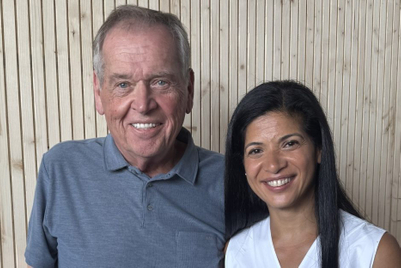
But, after all the hype, the apology didn’t exactly beat any online audience records - at least not when you compare it with the 4.6 million who watched Michael Jackson’s hour and a half memorial online. In comparison, about 700,000 tuned in to the 14-minute Woods apology video.
Neither was this expression of regret a public relations hole in one. Most tweeters and the media mocked it, although a few crisis management experts acknowledged Woods had shown the key traits for securing public sympathy: a sincere, open apology, accountability for personal behaviour and a prescription for how it would be remedied. His wife, however, was conspicuously absent - a situation that crisis professionals never think is favourable. Although he had the next best thing with him: his mother.
The big debate of course is whether the apology will be enough to get sponsors back in bed with Tiger.
Unfortunately, the mea culpa didn’t do much to answer the question of when sponsors will again feel comfortable using him as a brand ambassador. Woods’ strength as an endorser - the public persona he successfully cultivated among advertisers and audiences - was tied not only to his athleticism, but the integrity that was once associated with him. Now, of course, his value lies almost solely in his strength as a golfer, and he has a long way to go to recover the corporate goodwill he has squandered. Indeed, one estimate puts the loss to Nike, Gatorade and his other endorsement companies at up to US$12 billion following the scandal.
And the problem, of course, runs deeper; not only is Woods a personal endorsement machine - worth $64 million in 2009 according to Forbes - but his presence on the golfing circuit is financially critical not only to the tours, but to TV networks and advertisers. When Woods injured his knee in 2008/09, TV viewership of events fell by 47 per cent according to Nielsen.
The Tiger saga may be far from over, but it offers an important reminder to marketers on minimising damage from alliances tainted by scandal:Being tied too closely to an individual star is a high-risk gamble with a potential downside that can outweigh any rewards. Take Accenture, which paid heavily for its total reliance on the golfer. Gillette’s diverse portfolio in comparison allowed it to fall back on other sports endorsers while putting Woods on the back burner without losing too much ground.
As for the Woods brand, its future is still murky. But one thing’s clear, the golfer will never be the same endorser again.
Got a view?
Email [email protected]
This article was originally published in the 25 February 2010 issue of Media.


.jpg&h=334&w=500&q=100&v=20250320&c=1)


.png&h=334&w=500&q=100&v=20250320&c=1)





.png&h=334&w=500&q=100&v=20250320&c=1)







